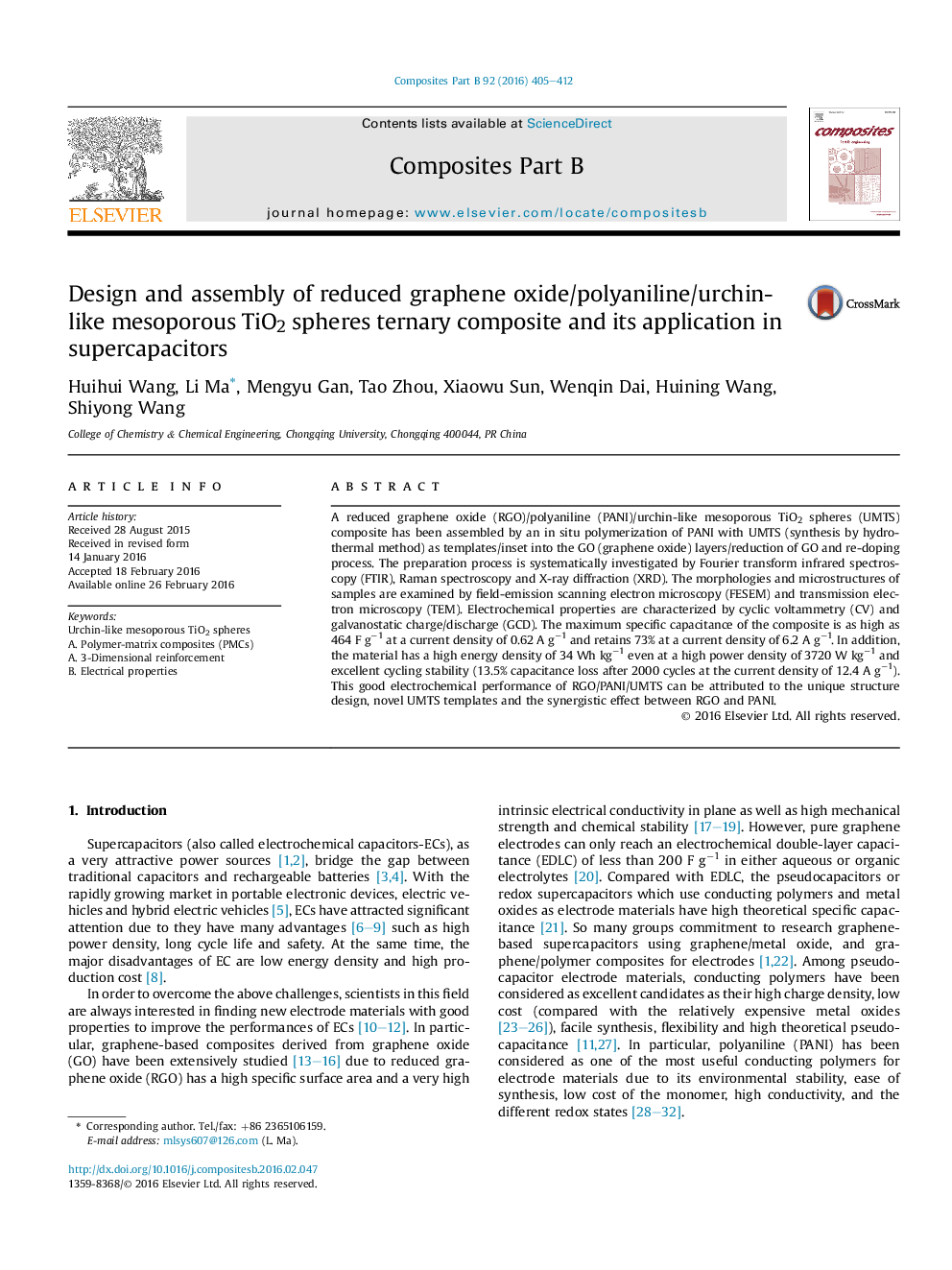| Article ID | Journal | Published Year | Pages | File Type |
|---|---|---|---|---|
| 816909 | Composites Part B: Engineering | 2016 | 8 Pages |
A reduced graphene oxide (RGO)/polyaniline (PANI)/urchin-like mesoporous TiO2 spheres (UMTS) composite has been assembled by an in situ polymerization of PANI with UMTS (synthesis by hydrothermal method) as templates/inset into the GO (graphene oxide) layers/reduction of GO and re-doping process. The preparation process is systematically investigated by Fourier transform infrared spectroscopy (FTIR), Raman spectroscopy and X-ray diffraction (XRD). The morphologies and microstructures of samples are examined by field-emission scanning electron microscopy (FESEM) and transmission electron microscopy (TEM). Electrochemical properties are characterized by cyclic voltammetry (CV) and galvanostatic charge/discharge (GCD). The maximum specific capacitance of the composite is as high as 464 F g−1 at a current density of 0.62 A g−1 and retains 73% at a current density of 6.2 A g−1. In addition, the material has a high energy density of 34 Wh kg−1 even at a high power density of 3720 W kg−1 and excellent cycling stability (13.5% capacitance loss after 2000 cycles at the current density of 12.4 A g−1). This good electrochemical performance of RGO/PANI/UMTS can be attributed to the unique structure design, novel UMTS templates and the synergistic effect between RGO and PANI.
